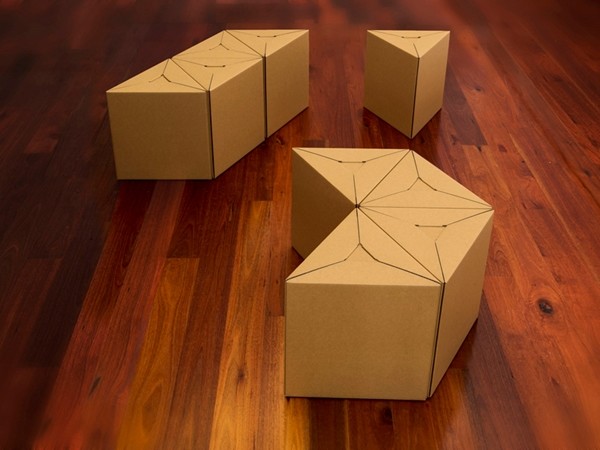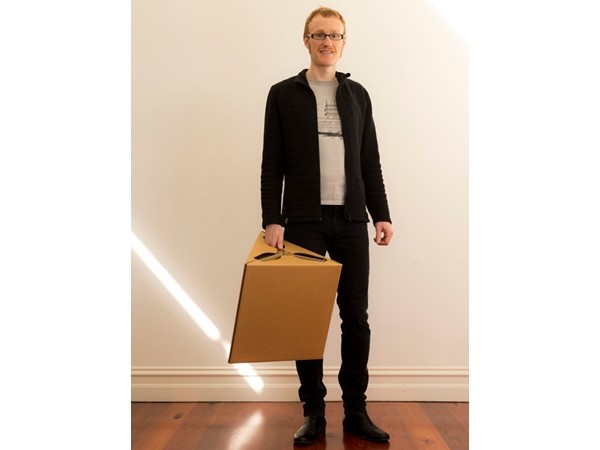Architect and interior designer Tobias Horrocks of Fold Theory has been awarded a 2014 Victoria Fellowship in the physical sciences category for his innovative use of cardboard in installations and exhibitions, and as furniture pieces.
A lightweight material commonly used for packing, cardboard is strong enough to replace less sustainable materials if engineered intelligently. It is the product’s sustainable qualities that drew Horrocks to it initially, and today all his furniture is made with 100 per cent recycled cardboard, which is derived from post-consumer waste paper and sustainably-managed plantation wood fibre.
The self-proclaimed ‘cardboard architect’ says his career took a turn when he designed a piece of cardboard furniture for his own use, the Freefold Popup Box. This led him to begin exploring the potential of the material as a design medium, with a desire to ‘fold’ architecture with furniture.
A recent example of Horrocks’ cardboard design is the Freefold Stool, which took home the ‘unbuilt’ category at the 2013 Architeam Awards and the best Sustainable and Waste Wise Design at the 2013 Fringe Furniture awards.

Featuring double corrugation and multiple folds, the durable and sturdy stool features handles that are integrated into the design, which makes transportation easy. It is furthermore capable of being connected with other Freefold Stools to form larger furniture pieces.
Each stool costs $30, and is assembled in less than two minutes from three identical pieces of cardboard without the need for tools.
The pieces of the stool are constructed similarly to a cardboard box – with a giant cookie cutter-type machine slicing and folding at the same time.

"[Cardboard] is a weak material,” Horrocks told The Australian in 2013.
“The beautiful thing about its weakness is that it's kind of a strength. It is a soft material, it doesn't end up in hard rubbish, it will always be recycled.”
The Victoria Fellowship will allow Horrocks to visit leading international designers in Italy, Spain, Poland, the USA and UK, as well as share the learnings with architecture and design communities in Victoria. Cardboard manufacturing capabilities already exist in the state, but innovation in materials has been limited by the lack of new experience and knowledge among local designers.
Horrocks will also use the study mission to investigate new computer software for developing models.


